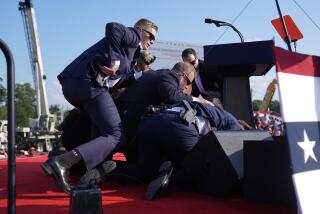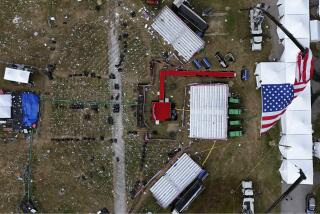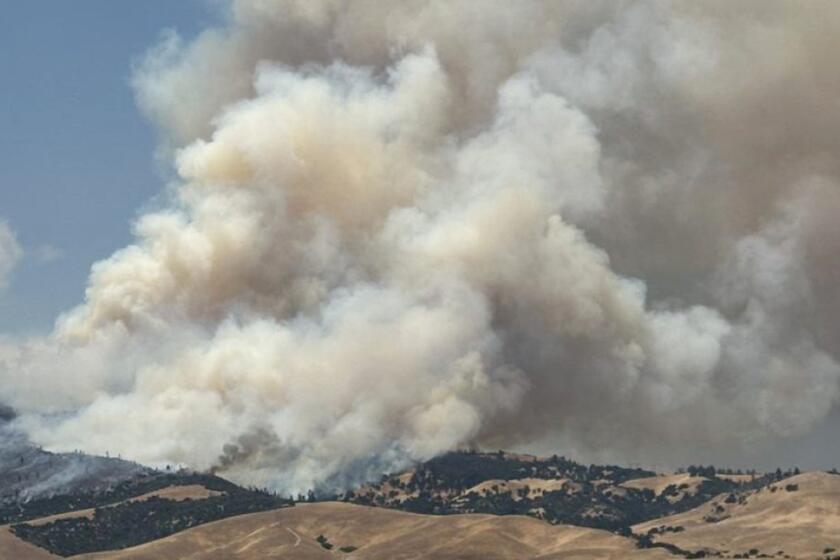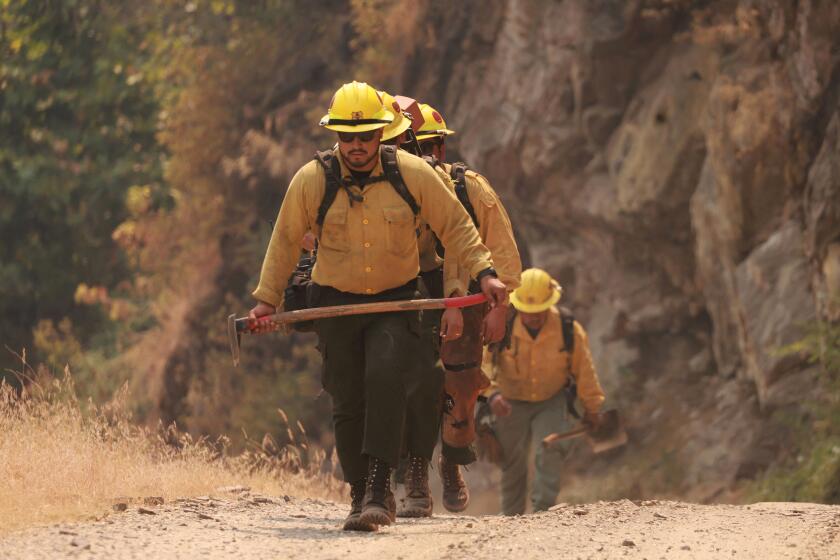100 Years Later, Oregon Remembers Worst Fire : Tragedy: Forty-three people perished on a bitterly cold Christmas Eve in a remote trading post.
On a bitterly cold night 100 years ago Christmas Eve, the deadliest fire in Oregon history claimed 43 lives at a Christmas pageant in this remote Lake County settlement.
About 200 men, women and children had packed into the J. H. Clayton Hall above the Chrisman Store for a program of musical and dramatic performances and a gift exchange.
It was a joyful occasion for the hard-working residents of the only established trading post between Prineville and Lakeview.
The families of Oregon Trail pioneers rarely had the time to celebrate on the high desert, so nearly everyone from the settlement was there.
The oldest survivor, Veva Poorman, died last year just before her 99th birthday. She was only 7 months old when her father, John Buick, carried her and her older brother, Frank, from the flames.
But tales of the 1894 blaze still live in the memories of the children and grandchildren of the survivors.
Poorman, for example, spoke often of the fire during her long life, according to her daughter-in-law, Joan Poorman of Manlius, N.Y.
Poorman recalled her father telling her how he placed her on the bar of the saloon across the street and returned to search for his wife and a third child, who were killed in the fire.
“She was a marvelous storyteller,” Joan Poorman said of her mother-in-law. “I think she was proud of being the last survivor. It showed that adversity is strengthening to character.”
Silver Lake rancher Marjorie Iverson recalls the story of her father, Jewell, a boy of 5 in 1894, whose sister probably saved the family by coming down with a cold and earache that kept them home that night.
“My Dad wanted to go with the Schroeders, who were neighbors,” Iverson said. “But my grandmother wouldn’t let him go.”
As it turned out, Augustus Schroeder saw his first wife, Lucinda, and their young son, Eston, perish in the flames. Schroeder remarried later and had five children, including Neva Warner, 95, Silver Lake’s oldest citizen until she moved to a Bend foster home in July.
Warner, who spent her entire life in the tiny desert community, said her father saved many lives even though he could not rescue his own wife and son.
“My father never would talk about it much,” she said. “When you lose your loved ones like that, it does something to you.”
Historian F. A. Shaver wrote an account of the fire for the Western Historical Publishing Co. in 1905.
On Christmas Eve in 1894, family members sat side by side on planks set atop chairs and boxes, watching friends and loved ones sing and perform on the stage of a community hall that was used for dances, theater shows and sermons by roving evangelists.
The hall was decorated with paper chains and festoons of fragrant pine. A Christmas tree next to the stage was dressed in paper ornaments.
Then it started. The choir was finishing its last song of the evening when 18-year-old George Payne stood and walked along one of the makeshift benches. His head bumped a large Rochester lamp suspended from the ceiling, causing it to slosh coal oil into the burner and flare and flame inside.
The owner of the building, Francis Chrisman, grabbed the flaming lamp from the chandelier and hurried with it across the crowded room toward the door.
He didn’t make it. Panic broke out and the lamp fell to the floor, where it was kicked around, spreading oil all about. A few men pleaded for order, but it was too late.
People stumbled over benches and surged toward the only exit, trampling each other in their rush. A young woman’s dress burst into flames. Terror swept through the crowd.
Shaver wrote that some were calling loudly for loved ones, others were rushing through the blinding smoke and flames, trying to escape.
But the only entrance, a door to the narrow stairs leading down to the Chrisman Store, opened inward and was quickly blocked by the crush of people.
Behind the stage, two windows on the front of the building provided escape for only a few, such as Walter Duncan who crawled onto the porch roof just below the windows and helped rescue about 20 people.
Water was pumped on those stumbling out of the building with their clothes aflame, until the hose rig jammed. Then the stairs, heavy with people, collapsed.
A few still in the hall leaped through the flames into the dark night rather than face the swelling inferno behind them. The rest were overcome by heat, smoke and flame.
“From the instant the lamp was bumped, hardly more than two minutes passed before the entire building was engulfed by fire. The screams and groans . . . were heart-rending,” Lake County Judge E. M. Brattain wrote to the Morning Oregonian several days later.
Before he even knew the extent of the tragedy, Ed O’Farrell, a young cowboy working on a local ranch, fled on horseback to summon Dr. Bernard Daly in Lakeview, 100 miles away.
O’Farrell crossed the snowy desert in minus-20-degree weather at full gallop, changing mounts at ranches along the way and arranging for fresh horses to be waiting upon the doctor’s return.
When Daly arrived at the grim scene on the morning of Dec. 26, every house in the village had been turned into a hospital. People from Paisley, Summer Lake and ranches throughout the area arrived for days to offer what help they could.
The dead included 19 women and eight children. Nearly every family saw a loved one perish. There was little left but ashes and bones that were gathered up and placed in a single large coffin.
Word of the tragedy took four days by mail stage and telegraph to reach Portland, where the Dec. 29 Morning Oregonian reported it, followed by The New York Times the next day, and newspapers around the world.
“When we came to Silver Lake in 1912, people were still talking about it,” said Vivian Stratton, now 90.
A 10-foot-high granite monument bearing the names and ages of those who died was erected in 1898 and still stands today.
A brief memorial service is planned at 4:30 p.m. Dec. 29 at the Silver Lake Cemetery.
More to Read
Sign up for Essential California
The most important California stories and recommendations in your inbox every morning.
You may occasionally receive promotional content from the Los Angeles Times.






